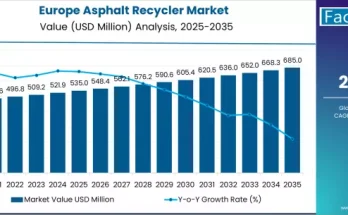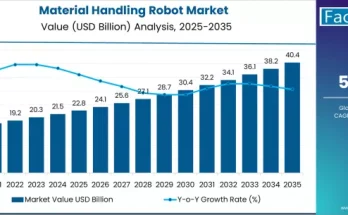In an era where accuracy and reliability define industrial performance, the manometers market is witnessing a notable upsurge in demand. As industries become more automated and process-driven, the need for precise pressure measurement instruments has never been greater. Manometers, known for their ability to provide accurate readings of gas and liquid pressure, are gaining prominence across diverse sectors — from oil and gas and chemical processing to healthcare and environmental monitoring.
Growing emphasis on quality assurance, coupled with regulatory requirements for pressure management and leak detection, continues to fuel the adoption of modern manometers. These devices are increasingly integrated with digital technologies, reflecting a global shift toward smart instrumentation and real-time monitoring.
Market Overview
The manometers market represents a dynamic ecosystem of traditional mechanical gauges and advanced digital instruments designed for versatile applications. These devices measure pressure relative to atmospheric pressure, vacuum, or differential readings between two points.
Manufacturers are increasingly focusing on user-friendly, robust, and high-precision manometers capable of performing under extreme temperature and pressure conditions. Moreover, the integration of IoT and digital connectivity features is transforming manometers from simple mechanical devices into intelligent diagnostic tools.
Technological advancements have enabled more compact designs, corrosion-resistant materials, and improved calibration capabilities. These innovations are particularly relevant to industries seeking consistent performance in harsh operational environments.
Regional Insights
North America
North America remains a frontrunner in adopting modern pressure measurement technologies. The region’s dominance is supported by the presence of key process industries, such as petrochemical refining, pharmaceuticals, and power generation. Continuous modernization of industrial infrastructure and a growing focus on workplace safety standards are propelling demand for both analog and digital manometers.
Europe
Europe’s emphasis on energy efficiency, emission reduction, and process safety has accelerated the deployment of manometers across various sectors. The region’s strong engineering base and rigorous product compliance norms have encouraged manufacturers to innovate and align with EU directives for equipment safety and environmental performance.
Asia-Pacific
Asia-Pacific is emerging as the fastest-growing hub for manometer adoption, driven by rapid industrialization and expanding manufacturing capabilities in countries like China, India, and Japan. The region’s growing investments in oil & gas exploration, water treatment, and renewable energy infrastructure are creating lucrative opportunities for global and regional players alike.
Rest of the World
Latin America and the Middle East & Africa are witnessing gradual yet steady adoption of manometers, especially within oil exploration, chemical, and construction sectors. Infrastructure development projects and investments in process automation are supporting market penetration in these regions.
Key Trends and Developments
- Digital Transformation of Measurement Systems
Traditional U-tube and inclined manometers are giving way to digital variants equipped with sensors, data logging, and remote monitoring features. These systems enhance operational accuracy while reducing manual intervention. - Focus on Miniaturization and Portability
Compact and handheld manometers are gaining traction among technicians and field engineers for their convenience and ease of use. This trend aligns with industries prioritizing mobile inspection and on-site diagnostics. - Integration of IoT and Wireless Monitoring
The emergence of smart factories and Industry 4.0 frameworks is driving the integration of manometers with IoT-enabled platforms. Real-time monitoring and predictive maintenance capabilities allow for efficient system management and reduced downtime. - Material and Design Innovations
Advanced materials such as stainless steel, aluminum alloys, and chemical-resistant polymers are improving product longevity and performance. Ergonomic designs and digital displays are also enhancing usability across industrial and laboratory settings. - Sustainability and Safety Focus
With environmental regulations tightening worldwide, industries are investing in eco-friendly and leak-proof pressure measurement solutions. This has led to an increased preference for precise manometers that minimize wastage and ensure process integrity.
Applications and End-Use Outlook
Manometers find applications across a wide spectrum of industries where pressure accuracy is mission-critical.
- Oil & Gas: Used for monitoring pressure in pipelines, storage tanks, and refining operations to ensure safety and efficiency.
- Chemical & Petrochemical: Support process control by maintaining optimal reaction conditions and preventing overpressure scenarios.
- Healthcare & Medical Devices: Integral to respiratory systems, anesthesia equipment, and laboratory testing setups.
- HVAC & Building Automation: Enable efficient air pressure control for ventilation, air conditioning, and heating systems.
- Water & Wastewater Management: Facilitate flow monitoring and pump control, ensuring smooth operation in fluid management systems.
- Aerospace & Automotive: Used in testing environments for engines, hydraulics, and fuel systems, where even slight pressure deviations can affect performance.
As digitalization transforms industrial operations, end users are increasingly seeking smart, connected manometers that can seamlessly integrate into automated systems. This growing preference for intelligent measurement tools is reshaping competitive dynamics across the market.
Challenges and Opportunities
Despite their growing adoption, the manometers market faces challenges such as calibration drift, maintenance costs, and limited awareness in small-scale industries. However, these hurdles also open avenues for innovation. Manufacturers are focusing on developing low-maintenance, self-calibrating models and offering remote technical support to enhance user experience.
Furthermore, the expansion of renewable energy and environmental monitoring sectors presents new opportunities. Manometers are becoming crucial components in applications such as wind turbine performance analysis, biogas pressure regulation, and water resource management.
Conclusion
The manometers market is evolving from conventional pressure gauges into a sophisticated ecosystem of digital and connected instruments. As industries move toward smarter, safer, and more sustainable operations, the role of precision measurement will only deepen.
Investing in advanced manometer technologies not only ensures compliance and safety but also strengthens the foundation for efficient industrial performance. For organizations aiming to enhance process reliability and measurement accuracy, understanding the latest market developments and innovations is key to staying ahead in this competitive landscape.
Browse Full Report –https://www.factmr.com/report/539/manometers-market



